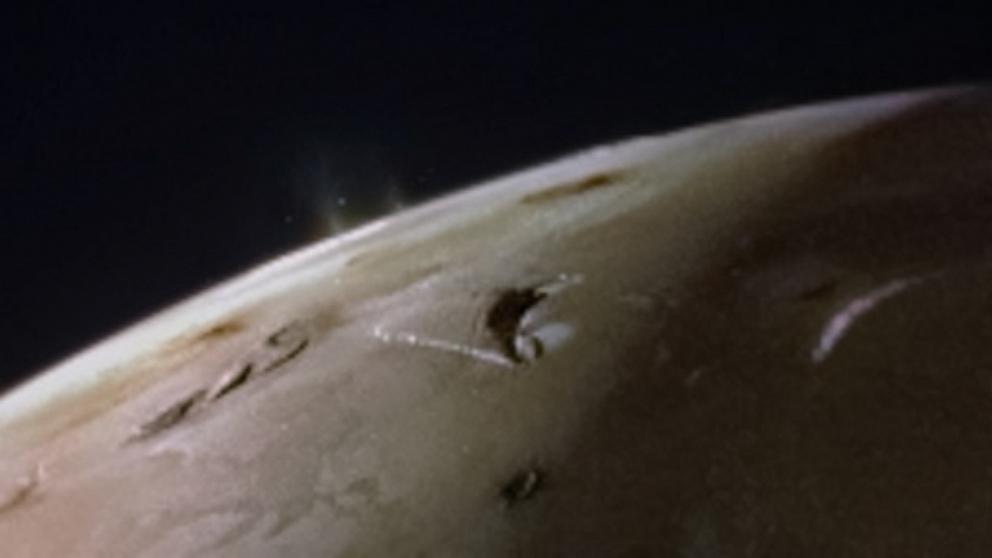NASA’s Juno spacecraft conducted two flybys of Jupiter’s moon, Io on February 7, 2024. In the latest images taken by NASA’s Juno spacecraft, there is visible volcanic activity occurring on Jupiter’s moon, Io. Io is the third largest moon orbiting Jupiter and is thought to be the most volcanically active body within our solar system, with around 400 active volcanoes, according to NASA. This marks the second time in 22 years that the orbiter has conducted a flyby of Jupiter’s scorching moon, getting as close as about 930 miles and capturing two volcanic plumes emanating from its surface. The first flyby occurred on December 30th of the previous year. The detailed images of Io, captured on February 3rd, show the moon partially lit against the darkness of space. “The second pass went predominantly over the southern hemisphere of Io, while prior flybys have been over the north,” commented NASA in a press release. The agency added, “There’s a lot to see in these photos,” pointing out that there are signs of an active plume, towering mountain peaks with well-defined shadows, and lava lakes, some with apparent islands.
The exact composition of Io is still unknown to researchers, but NASA believes that the moon is likely made up of molten sulfur or silicate rock while its atmosphere is mainly composed of carbon dioxide. In the images captured by NASA’s Juno spacecraft on February 3, two volcanic plumes can be seen rising above the horizon of Jupiter’s moon Io, potentially emitted by two vents from a single massive volcano or two separate volcanoes located in close proximity. These images were taken from a distance of about 2,400 miles (3,800 kilometers) using the JunoCam instrument.
Although the surface of Io displays intense volcanic activity in the images, scientists are still trying to understand how Io’s “volcanic engine” functions and whether the moon has a “global magma ocean” beneath its solid exterior. “The twin flybys are designed to provide new insight into how Io’s volcanic engine works and whether a global magma ocean exists under Io’s rocky surface,” stated NASA in a post on X.Io is the innermost of Jupiter’s four massive moons, and scientists believe that its position within Jupiter’s gravitational pull contributes to its vigorous volcanic activity. “Io is caught in a tug-of-war between Jupiter’s powerful gravity and the smaller pull from two neighboring moons, churning its insides and creating eruptions and lakes of lava that cover its surface,” explained NASA. Jupiter’s four Galilean moons were first discovered by Italian astronomer Galileo Galilei in 1610.
NASA’s Juno spacecraft was launched from Earth in 2011 and entered Jupiter’s orbit in 2016. Initially scheduled to complete its mission in 2021, the mission was extended through September 2025 to continue the exploration of the planet’s moons.
New Images from NASA Display Explosive Eruptions from Volcanos on Jupiter’s Moon












